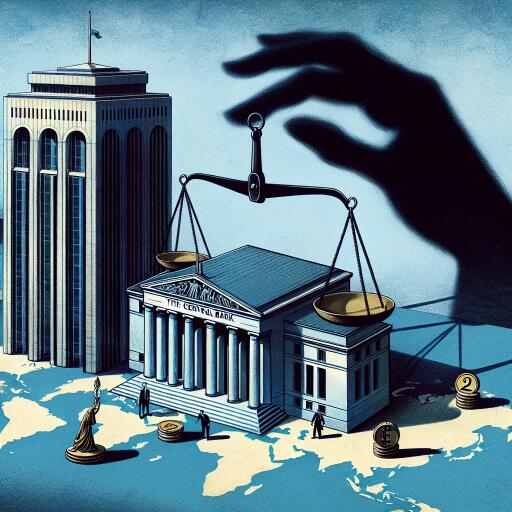Central Bank Independence Could Be Under Threat. Here’s Why That Matters
The phrase “The Buck Stops Here” famously adorned President Harry S. Truman’s desk, symbolizing the ultimate responsibility of governing and the hard choices that leadership often has to make. Among these choices is the economic decision on how to handle recessions and the growing burden of national debt. Governments can either allow the economy to slip into a recession or borrow more, delaying the economic pain but potentially exacerbating future financial challenges.
In the event that debt levels become unsustainable, a government is then faced with a critical decision: accept the possibility of default or choose to print more money, thereby devaluing its currency. This choice is a testament to the gravity of economic policy decisions and their long-term implications on a nation’s financial health and stability.
Over the past two decades, we’ve witnessed an alarming rise in debt levels worldwide. Governments have engaged in significant borrowing, first to mitigate the disastrous potential of banking system collapses as seen with Lehman Brothers in 2008, and then again to cope with the economic implications of the COVID-19 pandemic lockdowns. According to data, from 1999 to 2023, the global debt-to-GDP ratio has surged from 220% to a staggering 331%.
It’s important to differentiate the nature of debt before and after the 2008 global financial crisis. Prior to the crisis, much of the developed world’s debt was accumulated by banks, which then financed business ventures and real estate developments. This form of debt, primarily used for productive purposes, circulated through the economy, fostering growth. However, the post-2008 era saw a significant shift. Banks, driven by the need to deleverage, retracted, paving the way for governments to step in. The bulk of government-incurred debt post-2008 has been aimed at stabilizing the financial system, plugging fiscal gaps, and reinforcing social security systems – endeavors that, though necessary, are often seen as less directly productive in terms of stimulating economic growth.
As a result, the landscape of global debt and its impact on economies has transformed. Developed economies, in particular, experienced a decline in GDP growth rates from an average of 2.8% in the years before the crisis to 1.6% in the aftermath. This slowdown in growth, juxtaposed with the rapid accumulation of debt, has raised questions about the sustainability of current economic policies and practices.
This shift in the nature of debt and the increased reliance on governmental borrowing post-crisis underscores a critical concern: the potential threat to central bank independence. The direct intervention of governments in financial markets, combined with the growing tendency to resolve fiscal challenges through monetary policy tools, such as quantitative easing and low interest rates, could significantly erode the autonomy of central banks. This independence is crucial for maintaining economic stability, controlling inflation, and ensuring a robust response to future financial crises.
Central bank independence acts as a safeguard against the politicization of monetary policy. It prevents governments from succumbing to the temptation of using the central bank to finance fiscal deficits or manipulate interest rates for short-term political gain, actions that could lead to hyperinflation or undermine the credibility of the currency. Yet, the intersection of fiscal challenges and monetary policy in recent years suggests that this independence is becoming harder to preserve.
As we move forward, the lessons from these financial upheavals and policy responses serve as a stark reminder of the complexities of governing in an interconnected global economy. The decisions made today will not only shape the economic landscape of tomorrow but will also test the resilience of institutional frameworks designed to safeguard financial stability. The preservation of central bank independence, amidst the evolving challenges of debt management and economic growth, is not just a matter of policy preference but a cornerstone of economic stability that merits vigilant protection.
Therefore, recognizing the significance of central bank independence and understanding the nuanced dynamics of global debt are essential for navigating the precarious balance between economic recovery and financial stability. As the world grapples with the implications of soaring debt and the potential threats to monetary autonomy, the adage “The Buck Stops Here” resonates with renewed urgency, underscoring the pivotal role of sound governance and decisive leadership in steering the global economy towards a sustainable future.
